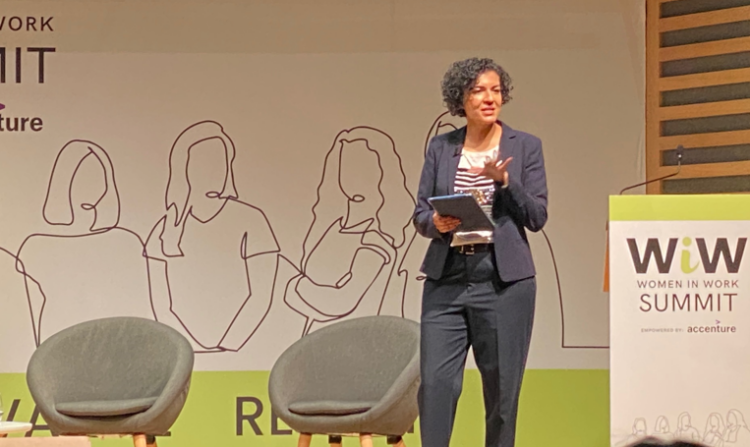The way to increase gender equity at work and the number of women in senior roles is to “take away the fences, instead of giving people taller ladders to climb over them”, said Prerana Issar, chief people officer (CPO) at Sainsbury’s, at the Women In Work Summit (WiW) yesterday.
Issar said that using data to explain the value of gender equity to CEOs and other leaders was a key way to address inequity, as she gave her keynote speech at the event.
She said you can’t increase diversity, equality and inclusion just through a training course.
‘Scary case’
“I learned that if we can make a very scary case to scare leaders who are not already on the bus [with the gender equity business case], scare them with data and a forward projection of our talent pipeline today, and say: ‘If we don’t address this issue now, this is what our talent pipeline will look like in the future [it helps them understand the imperative].’”
In her previous role as the NHS CPO, Issar supported the 1.2 million people who work for the NHS, including through the COVID-19 pandemic.
She said there are one million women working in the NHS, so they clearly make up the vast majority of people in the organisation. Given the ongoing challenges of retaining NHS workers, it’s crucial to understand the experience of women, she added.
Sticky feet
During her time at the NHS, she introduced ‘sticky feet’ conversations to find out about the reasons people leave the NHS, so they could better address them. They looked at when nurses leave, and when other professionals leave, and found there’s a range of between 45 and 55 years old.
Looking at the age range and the fact that the majority of workers are women, she said that one example of where women’s lived experience might be being missed is around controlling the temperature in the office.
“I am 50, and sometimes if I can’t open the window I feel like I’m going to go up in flames,” she said. But while the majority of NHS workers are women, “it is the facilities team that controls the temperature, and the team are all men”, she said.
Issar said that being unable to control something as simple as the temperature at work lead to a lot of significant conversations. These conversations informed a predictive analytics project to identify some of the “red flag” signals that might indicate that someone was about to leave.
Other signals might include an increase in sickness absence or taking more leave than they had previously, because work is not working for them.
In response to identifying the red flag signals, she said they created a very simple checklist of questions that HR or a line manager could ask someone showing these red flags. The idea was to identify their needs and potentially make reasonable adjustments to support them.
“We actually did make a dent in attrition levels so I would really advocate for data, data, data, and informing analytics with questions that can inform what might be happening with women and people in other demographics,” Issar said.
In her current role at Sainsbury’s, she said the company was working on connecting their different employee support groups around the life stage issues that they might share. The idea is to encourage a more inclusive culture.
For example, while the employer has employee groups for women of colour, people who work with disabilities or gender identity, the idea is to recognise the issues people have as they go through life. “Then people will have allies when they are going through something,” she said.
She said that her CEO Simon Roberts is extremely committed to gender equity, emphasising that Sainsbury’s has 60 percent women on the board.
“He is more than an ally, he wants to create change in the world. What that means across the organisation is that people either need to self select themselves in or self select themselves out, [by asking themselves]: ‘Is this a culture that I want to work in?’.”
Achieving gender equity at work requires “a coalition of people that want change and can bring change, and that coalition is not only women”, she said.
“Performance is better with a more diverse team, so you need to link outcomes to performance. If a leader doesn’t care about outcomes they won’t be a leader for long.”













